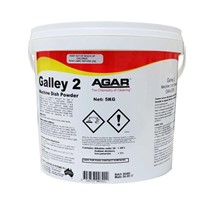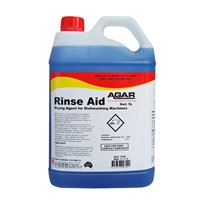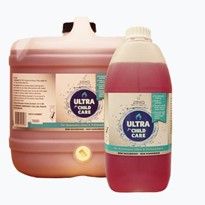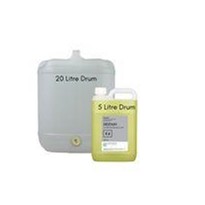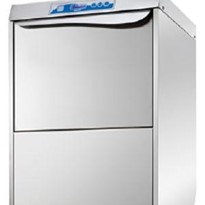Restaurant servers work in perfect harmony. The ballet of plate clearing and table setting makes sure they are ready for the next customer. But what is going on behind the scenes? What should the dishwashing process look like for you to serve up hygienically clean dishes with your delicious cuisine?
It's time to clear the way to hygienically clean dishes.
Hygiene is everything in the kitchen. Even minor errors or lapses in concentration can harm hygiene and the consequences can be serious. Food can be ruined or, much worse, customers can become ill.
The rule in the dishwashing area is that operators must ensure that the dishware arrives with the customer completely clean and hygienic. There can be no health risks from using it.
In times of salmonella or SARS-CoV-2 outbreaks, there can be no mistakes with hygiene. But you can stop worrying because you can prevent these using the right planning and proper processes with MEIKO technology.
What to keep in mind in the dishwashing process
'The proper room separation between clean and dirty sides and consistent implementation of procedures is the essential groundwork for washing the dishware to hygienic standards and making it available for use again.'
From the ‘Commercial warewashing and hygiene’ fact sheet from VGG (Industrial Dishwashing Association’)
The planning phase sets the course for the best possible hygiene standards in the dishwashing area. So what does that look like?
Well, that of course depends on the conditions of the room and the dishwasher! Whether you opt for an undercounter, hood type, flight type or rack type machine, you need to consider one factor—always split the space into a clean and dirty side.
This separation helps prevent recontaminating dishes that have already been washed, reducing health risks.
Take a look at this schematic plan that shows the planning of an ideal dishwashing area and the construction requirements to be fulfilled.
Planning example
- Dirty side = collection point for dirty dishware
Only work here with sufficient PPE - Clean side = collection point for clean dishware
Only work here with clean hands or clean gloves - Ideally, install a physical divider between the clean and unclean sides.
- If that is not possible, maintain strict separation between loading and unloading the dishwashing machine.
- Clean and dirty dishware must not cross paths.
- Provide opportunities for hand washing when crossing from the dirty to the clean side.
- Provide opportunity to change disposable gloves when crossing from the dirty to the clean side.
- Establish or reassess zone setup for room ventilation: Low pressure on the dirty side and high pressure on the clean side can prevent dirt from travelling through the air and contaminating the clean side. Important: unfiltered external air must not be used to ventilate the clean side.
What to keep in mind in dishwashing process
In the cleaning process, the dishware moves through a cycle: From being cleared from the table to being ready for use by the next customer. The operator must ensure that the dishware is not recontaminated in this cycle. Read on for what to remember at each step of the process.
The washware cycle
Step 1: Return/pick up
- Only work with dirty dishware with sufficient PPE.
- Retrieve dirty dishware to the kitchen by clearing tables using open/closed containers/carts or conveyor belts system.
- Set up the return point for used dishware for maximum capacity. There needs to be sufficient return capacity provided for the volume and type of dishware.
Step 2: Pre-sorting/pre-washing
- Keep the time leftover food stays on the dishes as short as possible! That limits microbe multiplication and makes cleaning easier.
- Clear and remove food and other waste from the dishware, either manually or by machine.
- Empty dishes by scraping without using additional fresh water or automatically by using a machine.
- Pay special attention to the routes used for removing food and other waste.
- One remarkably hygienic option for processing food waste is to use a food waste treatment system by MEIKO GREEN. This does away with the need to manually carry waste as it can be immediately disposed of on the spot.
Step 3: Loading the dishwashing machine
- We recommend sorting cutlery into a cutlery quiver and pre-treating it in a heated cutlery soak cart using a detergent that will not bubble in a commercial dishwashing machine.
- Suitable dish and glass racks should be available for other types of dishware, or, in the case of a conveyor dishwashing machine, a suitably equipped conveyor belt.
- Ensure the even running of processes particularly at full capacity.
Step 4: Cleaning and drying
This takes place inside the dishwashing machine and marks the transition from the dirty side to the clean side.
Step 5: Unloading
- Handle clean dishware only with clean hands or clean gloves.
- Do not stack damp dishware if the dishwasher does not have the feature to dry it completely.
- Do not use a towel to dry dishware or hand polish it as this adversely affects hygiene. Let them air dry in a clean and well ventilated area instead.
- Standing water and damp towels breed germs, making them a hygiene risk.
Step 6: Getting ready to serve again
- Provide sufficient storage space for the clean dishware, where it will not get dirty again even if you store the dishes for an extended period.



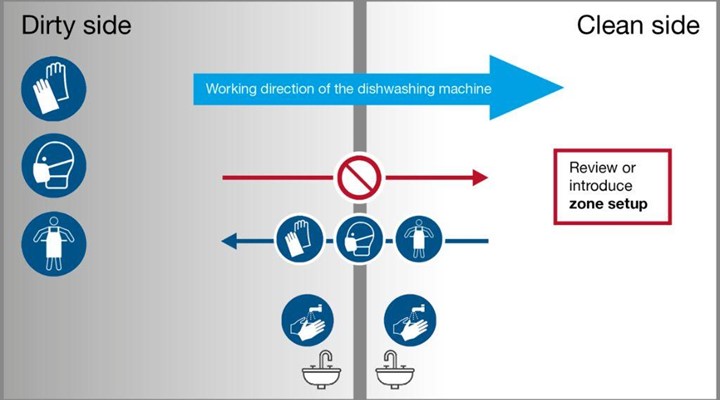


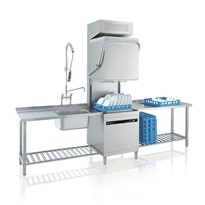

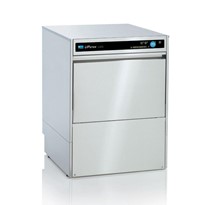



-205x205.jpg)


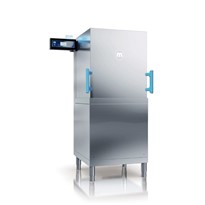
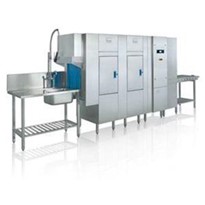



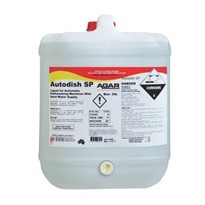
-205x205.jpg)
